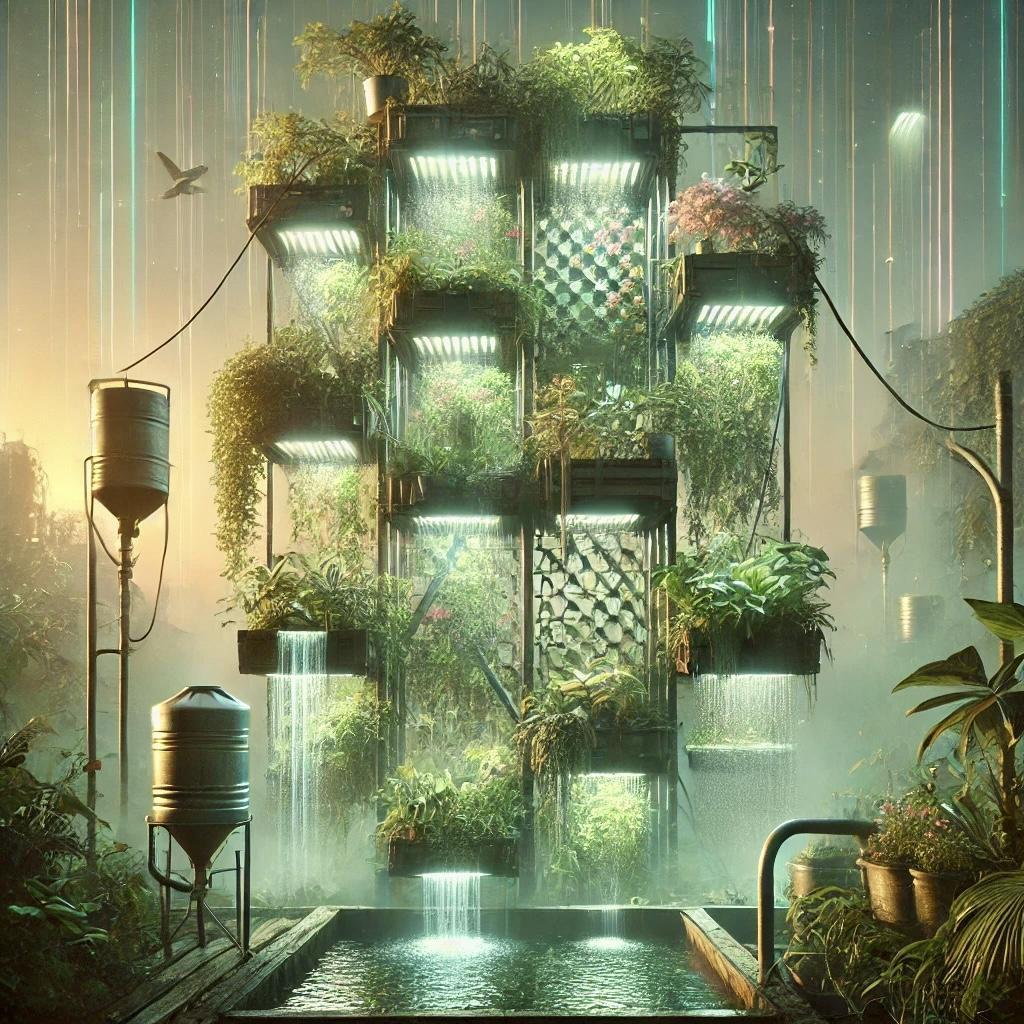
ReLeaf breaks down waste and builds up ecosystems.
Water system
The heart of the vertical garden, circulating water from a reservoir at the base of the garden to the top using an upcycled pump (possibly from an old aquarium). Gravity then takes care of the rest, allowing water to trickle down to reach all plants. The water reservoir can be refilled manually or with a rainwater collection system.
Architecture
The structure of the vertical garden itself, which can be built from various upcycled materials like wooden pallets, old ladders, or metal frames. These serve as the skeleton of the garden, allowing plants to grow upwards, maximizing the use of vertical space.
Soil and compost
Using compost created from organic waste, which not only provides nutrient-rich soil for the plants but also embodies the principle of waste reduction. In particular, worm composting, or vermiculture, is a natural process that transforms kitchen scraps into a fertile medium for plant growth.
Transformative plants
Growing a variety of native plants, herbs, and even fungi in repurposed containers. These can be harvested for consumption, reducing the need for store-bought produce and connecting residents with the cycle of growth and harvest.
Education and engagement
Through building and maintaining these vertical gardens, ReLeaf fosters education and community involvement. This helps spread the principles of sustainable living and the circular economy.